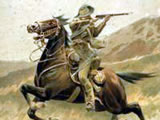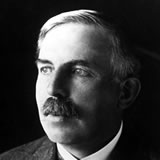What happened that day?
See historic events for any day of the year by entering the date below. Why not try your birthday?
Kiwi of the Week
Today in History

1899 NZ troops fire first shots during South African War
Having answered the Empire's call to arms against the breakaway Boer states in South Africa, New Zealand troops fired their first shots in anger in northern Cape Colony.
The South African War of 1899-1902, often called the Boer War (sometimes the Second Boer War), was the first overseas conflict to involve New Zealand forces. On 28 September 1899, with war in southern Africa seemingly imminent, New Zealand offered its support to the 'Mother-country'. Premier R.J. Seddon asked Parliament to approve an offer to the imperial government of a contingent of mounted rifles. Amid emotional scenes, the proposition was overwhelmingly endorsed – only five members voted against it – and within days authorities in London accepted the offer. Seddon proudly proclaimed New Zealand's the first legislature in the Empire to offer assistance.
Hundreds of men applied to serve in the contingent, membership of which was restricted to those already serving in New Zealand's tiny regular forces and the Volunteer Force. By the time that war began on 11 October 1899, after a Boer ultimatum over the deployment of British troops in South Africa had been ignored by London, a 215-man contingent was already encamped in the Wellington suburb of Karori. Meanwhile, the Defence Department sought frantically to gather together its equipment and horses.
Ten days later, on 21 October, it was given a tumultuous send-off from Wellington. A huge crowd heard Seddon proclaim that New Zealanders 'would fight for one flag, one Queen, one tongue, and for one country – Britain'.
Under the command of Major A.W. Robin, the contingent reached South Africa on 23 November after an 'ocean race' across the Indian Ocean with Australian contingents, a contest the New Zealanders won by several days. Despite having received only rudimentary training, the troops were immediately sent north to join Lieutenant-General Sir John French's Cavalry Division in northern Cape Colony. They had their first engagement with the enemy on 9 December. On 28 December Private George Bradford succumbed to wounds he had received at Jasfontein on the 18th, becoming the first New Zealand soldier to lose his life in an overseas conflict.
Ultimately New Zealand sent nearly 6500 volunteers and 8000 horses to South Africa. In all, 71 members of the contingents were killed in action or died of wounds; 26 were accidentally killed, and 133 died of disease (more than half from typhoid fever).














